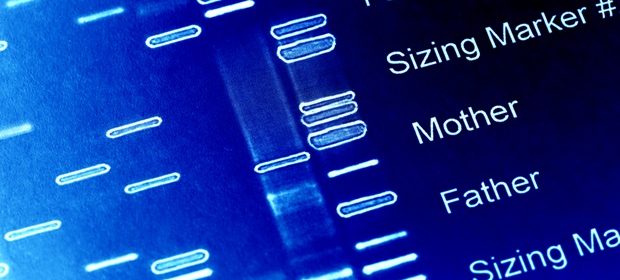Peyronie's Disease Causes

Peyronie’s disease represents a localized connective tissue disorder of the penis, which subsequently results in a penile deformity (manifesting as grave curvature of the erect penis). A substantial percentage of individuals with this condition have erectile dysfunction, while others suffer from such severe fibrosis that sexual intercourse is practically impossible.
Etiology and Risk Factors
The etiology of Peyronie’s disease is multifactorial in nature and not completely understood. The prevailing etiological theory entails a dominant role of penile trauma in inciting the development of this condition – either as an acute traumatic event, or as a repetitive microtrauma that may occur during sexual intercourse.
A myriad of modifiable risk factors for Peyronie’s disease have been identified in the medical literature. They include a personal history of genital or perineal trauma (that may even be iatrogenic as a consequence of catheterization or transurethral resection), as well as a history of non-gonococcal urethritis. Radical prostatectomy also increases the risk of Peyronie’s disease, as well as surgical interventions on the genital tract.
Erectile dysfunction can be seen in up to 32% of individuals presenting with Peyronie’s disease. Nonetheless, it is not completely clear whether one condition develops prior to the other, or if their occurrence is synchronous. Possible associations with increased blood pressure, diabetes, hypogonadism and smoking have been suggested, but they still have to be corroborated by larger studies.
Histopathology of Peyronie’s Disease
Tunica albuginea (literally translating to a 'white membrane') is a fascial structure that surrounds the penile spongy chambers (corpora cavernosa) that form the bulk of the penis. It is responsible for both the flexibility of the penis in flaccid conditions, as well as for providing rigidity during erection. In normal conditions, the tunica albuginea represents an intricate network of collagen and elastin fibers in multiple sublayers, dispersed around the penile corpora.
Conversely, Peyronie’s disease is characterized by focal fibrosis of the tunica albuginea that results in plaque formation and subsequent curvature (or deformity) of the penis due to decreased penile flexibility. Histological and ultrastructural changes reveal dense clumps of collagen fibers, as well as disordered and sparse elastin fibers. The atypical presence of fibrin may also be observed.
Transforming growth factor β1 (TGF-β1), plasminogen activator inhibitor-1 (PAI-1) and fibrin are all factors that play a role in the development of such histological changes and the development of the disease. Inadequate signaling between those molecules leads to scarring and plaque formation.
Genetic Associations
Trauma alone is thought to be insufficient to instigate plaque formation in otherwise normal individuals, as all sexually-active men are confronted with certain level of penile trauma due to sexual activity. Therefore, a genetic predisposition to fibrosis has to be present.
Several retrospective studies revealed a link between Peyronie’s disease and a variety of histocompatibility antigens (most notably HLA-A1, HLA-B7, HLA-B8, HLA-B44, HLA-Cw7, HLA-DR3 and HLA-DQ546), potentially suggesting real genetic predilection for the disease.
Peyronie’s disease has also been related with Dupuytren’s contracture, which is a superficial thickening of fascia in the palm of the hand, resulting in nodule formation and inward pulling of the fingers. These two disorders may share a common etiology (highly influenced by genetics) with the expression of multiple fibrosis-promoting genes.
Sources
- https://www.ncbi.nlm.nih.gov/pubmed/24984940
- https://www.ncbi.nlm.nih.gov/pmc/articles/PMC4535719/
- https://www.ncbi.nlm.nih.gov/pmc/articles/PMC1473022/
- https://www.ncbi.nlm.nih.gov/pmc/articles/PMC4857830/
- https://www.ncbi.nlm.nih.gov/pmc/articles/PMC4893516/
- https://www.ncbi.nlm.nih.gov/pmc/articles/PMC4708604/
- Cavallini G. Aetiology and Risk Factors. In: Cavallini G, Paulis G, editors. Peyronie’s Disease: A Comprehensive Guide. Springer International Publishing Switzerland, 2015; pp. 17-20.
Further Reading
- All Peyronie's Disease Content
- What is Peyronie’s Disease?
- Peyronie’s Disease Diagnosis
- Peyronie’s Disease Symptoms
- Peyronie’s Disease Treatment and Prognosis
Last Updated: Feb 27, 2019

Written by
Dr. Tomislav Meštrović
Dr. Tomislav Meštrović is a medical doctor (MD) with a Ph.D. in biomedical and health sciences, specialist in the field of clinical microbiology, and an Assistant Professor at Croatia's youngest university – University North. In addition to his interest in clinical, research and lecturing activities, his immense passion for medical writing and scientific communication goes back to his student days. He enjoys contributing back to the community. In his spare time, Tomislav is a movie buff and an avid traveler.
Source: Read Full Article